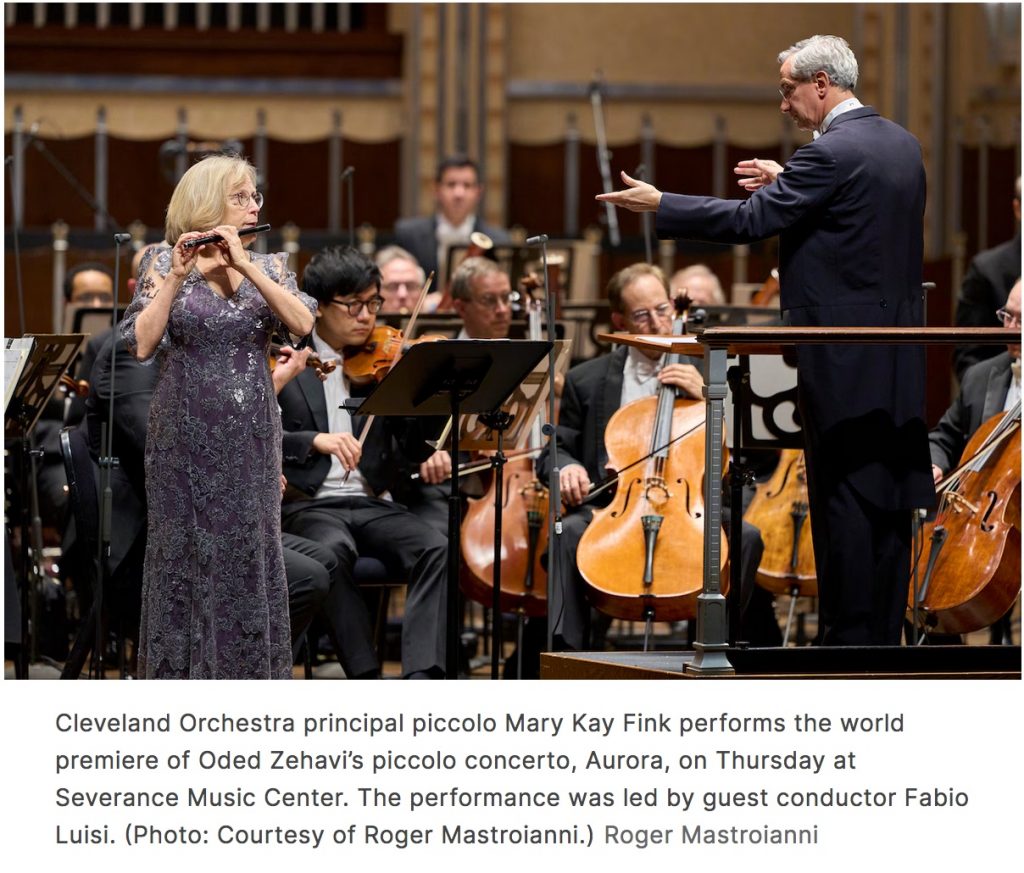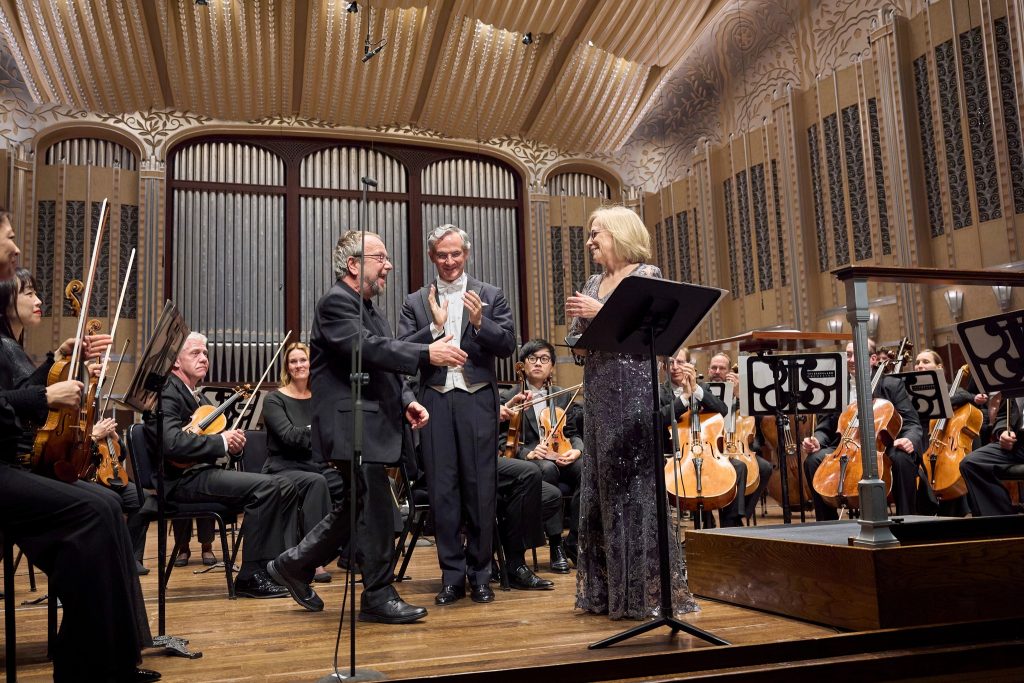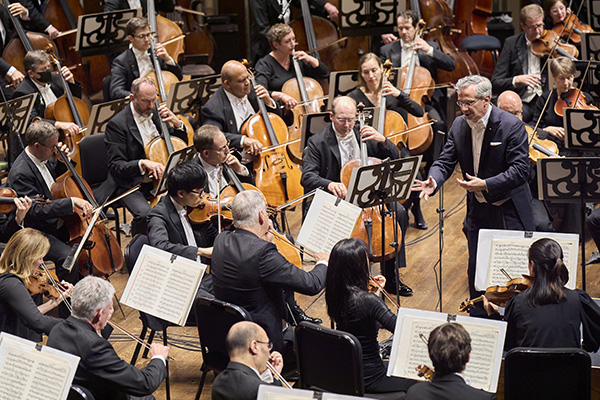
by Daniel Hathaway | Cleveland Classical
CLEVELAND, Ohio — It’s become fashionable to blame COVID for everything that didn’t happen in the past few years, but in the case of Oded Zehavi’s piccolo concerto, the pandemic truly kept the work waiting in the wings of Severance Music Center for four long years past its originally scheduled premiere in April of 2020.
On Thursday evening, Cleveland Orchestra principal piccolo Mary Kay Fink finally unveiled the 14-minute work in a performance led by guest conductor Fabio Luisi that was as glistering as the soloist’s silver concert gown.
Titled Aurora after the classical goddess of the dawn, the time of day Zehavi set aside for composition after young children came into his domestic life, the piece is an extended aria for the smallest but by no means the least expressive instrument in the orchestra. In the hands of a player like Fink, who completely unlocks the potential of the piccolo, the instrument can sing like the best of divas.
Scored for flute, clarinet, bass clarinet, two bassoons, horn, timpani, percussion (chimes, vibraphone, wood blocks), harp, and strings, the concerto is a beautiful exploration of never-ending colors. Playing with a clean, yet lush tone and impressive control, Fink captured your attention from the first few notes and realized the full range of Zehavi’s tonal vision.
Zehavi writes well for the orchestra, effectively using tubular chimes, and wood block accents from his magical palette of colors. Luisi brought those orchestral hues to life, always supporting but never overpowering the soloist.

The Cleveland Orchestra always sounds especially polished with Fabbio Luisi on the podium. Conducting without a baton, the Dallas Symphony music director drew wonderful, elegant playing from the ensemble beginning with the regal, opening notes of Carl Maria von Weber’s Oberon Overture, featuring principal horn Nataniel Silberschlag (in the opera Oberon gives the hero Huon a magic horn to protect him).
Luisi’s vibrant interpretation evoked the spirit of the opera house as well as the magical world of the King and Queen of the Elves. Here, he coaxed evanescent tones from the Orchestra with his fingertips.
To close the evening, Luisi led a perfectly-paced performance of Johannes Brahms’ Fourth Symphony distinguished by alluring solos by principal winds Joshua Smith (a big moment in the fourth movement), Jeffrey Rathbun, Yusuf Afendi, John Clouser, and Nathanie Silberschlag. He allowed the score to unfold naturally without hurrying matters along, but also found ways to instantly freshen the music when moods changed.
The richly-hued chorale that opens the second movement showed off the distinguished quality of the Cleveland Orchestra’s harmonie or wind band.
Grand, but clean and healthy-sounding, the third movement was energized by the cheerful ringing of the triangle, and the triumphant fourth followed after a mere one-second pause.
The composer, who always had difficulties launching his symphonies, seemed loath to end this one. A long goodbye culminated in the second powerful ovation of the evening.
Published on ClevelandClassical.com. March 10, 2024
Click here for a printable copy of this article




